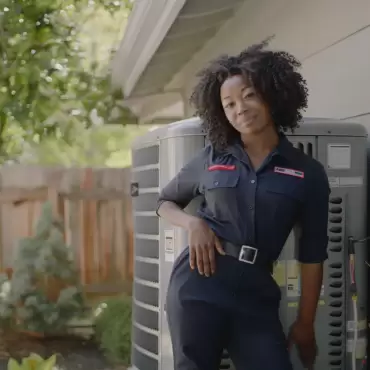You may not give it much thought at first, but your home’s indoor air quality might be negatively impacting your health. Worsening matters is that you don’t need to live near a factory or a busy street to have poor indoor air quality; the right combination of factors can lead to a buildup of contaminants no matter where you live.
The Origins of Poor Indoor Air Quality
According to the U.S. Environmental Protection Agency (EPA), your home can host concentrations of pollutants that are two to five times higher than the outdoors. In particular, the biggest culprits behind your home’s reduced air quality include the following:
Mold and Mildew
If your home is especially humid, mold and mildew can spread rapidly. Their spores spread through the air and can lead to respiratory infections and asthma attacks.
Pet Dander
Even if you’re not allergic to specific animals, the accumulation of pet dander and hair can still lead to adverse reactions and respiratory concerns.
Dust Mites
Exposure to dust mites can cause symptoms similar to hay fever or asthma, such as difficulty breathing, sneezing, and a runny nose.
Volatile Organic Compounds (VOCs)
Various chemicals found in household cleaners, paint, and even furniture can cause headaches and irritate the eyes, nose, and throat with enough exposure.
Tips to Improve Indoor Air Quality
The good news is that you can take concrete actions to make your home’s air breathable and safe. If you’re unsure whether your space needs immediate attention, you can have an experienced HVAC tech conduct indoor air quality testing to make sure.
But before they arrive, there are steps you can take to give your home’s air quality a boost:
Change Air Filters
Your air conditioner’s air filter will only last 30 to 90 days, after which it will become clogged. Swapping in a new one will allow your air conditioning system to continue filtering particles from the air.
Increase Ventilation
Simply opening your windows and letting in some fresh air as often as you can will help your home flush out contaminants. Another important ventilation tip is to always use bathroom vent fans following a shower to prevent humidity from lingering.
Use a Dehumidifier
Any location in your house that stays damp should have a dehumidifier, particularly the basement. Ideally, your home’s humidity levels should be between 30% and 50%.
Install Air Purifiers
If you need extreme filtration to remove even the tiniest of particles, consider HEPA filters. These scrub 99.97% of airborne dust, pollen, bacteria, mold, and other such contaminants. Some filters even feature UV lights to outright destroy pathogens.
Get Regular HVAC Maintenance
Companies that provide indoor air quality services can make maintenance far simpler. They’ll be able to find and fix duct leaks and other issues that can spread allergens and contaminants through your home.
Boost Your Indoor Air Quality With Service From Aire-Flo Heating, Cooling & Generators
Whether you need an indoor air quality test or are looking for comprehensive air quality improvement measures, trust the experts at Aire-Flo Heating, Cooling & Generators! Our experienced technicians will identify key areas to improve your home’s air quality and work with you on a maintenance schedule for your AC system.
You don’t have to suffer from poor air in your home; contact Aire-Flo Heating, Cooling & Generators today!
Whether you require installation, repair, or maintenance, our technicians will assist you with top-quality service at any time of the day or night. Take comfort in knowing your indoor air quality is the best it can be with MOE heating & cooling services Ontario's solution for heating, air conditioning, and ventilation that’s cooler than the rest.
Contact us to schedule a visit. Our qualified team of technicians, are always ready to help you and guide you for heating and cooling issues. Weather you want to replace an old furnace or install a brand new air conditioner, we are here to help you. Our main office is at Kitchener but we can service most of Ontario's cities
Source link



